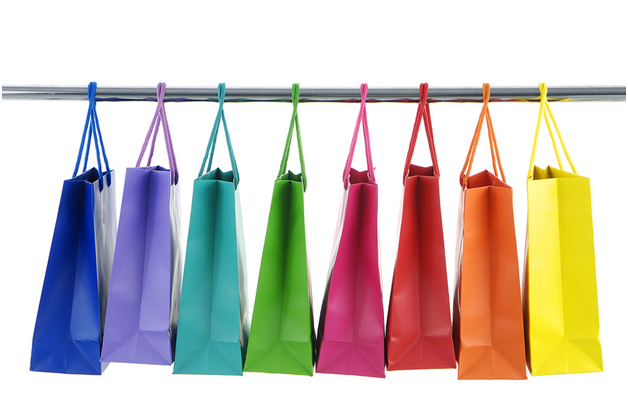For all the shopaholics around the world, a shopping bag is as essential as the purchases made. Not only does a shopping bag ensure that the articles are safely carried to their homes, but also a cherished brand’s logo or a cool design acts as a style statement for all the enthusiastic shoppers. As a brand, having a trademark shopping bag, with the logo of the store flaunted on its body, acts as a strong marketing agent, reminding shoppers of the brand, long after the weekend shopping is over and appealing onlookers to visit the store and shop all that their heart’s desire! Many of these bags can be used for storing household articles for regular use too, and thus, come with added benefits. They can also be used for future shopping outings and trips. Having shopping bags in various sizes is absolutely necessary for all stores, to accommodate purchases of different sizes and forms. Over the years, shopping bags have undergone a plethora of modifications and innovations, some triggered by environmental concerns, while others due to business needs and changing consumer demands. Nowadays, shopping bags wholesale can easily be purchased from the market and online stores. It is an industry that has bloomed as the years have gone by.

Mae use of Reusable, Recyclable Shopping Bags
Shopping bags come is various forms and made out of varied types of materials, some making the bag reusable, some recyclable, while others offering both the advantages. While consumers always prefer bags that are reusable, it must be accepted that all bags have an impact on the environment. There are materials, used to make a shopping bag, that are very difficult to recycle, which release harmful chemicals, like methane, to the atmosphere. Moreover, the process of recycling is long drawn and costly too, as the individual components of the bag have to be deconstructed. Heavier bags are usually more difficult to recycle, but provide consumers the advantage of more usefulness and durability. Natural materials have become popular in the making of a bag, considering their environmental friendliness, but tend to be expensive in manufacturing them.
The most common form of shopping bag is the typical two-handed plastic bag, convenient for both the stores as well as the consumers. Over the years, plastic bags have been all over the headlines, due to its impact on the environment. Being made out of polyethylene, which is a non- renewable and non-biodegradable material, many older plastic bags cause a lot of harm to the environment. Recent trends have shown that recyclable plastic bags are being manufactured that use a lot less of polyethylene as their content. They use catalysts that enable quicker decomposition of the materials, reducing them to carbon dioxide, water and other elements. The area of manufacturing bio-degradable plastic bags is still under research and continuous innovations are being applied in bringing the most environmental friendly plastic bags, within the acceptable manufacturing cost.
The Best Alternative to Plastic Bags
Paper bags have widely been considered as an alternate solution to plastic bags, owing to its convenient nature of use and recyclable nature. However, paper bags usually will not be able to carry too heavy materials, due to its light weight and are less reusable. They are also rendered non-usable when they become wet. Paper bags also form much less litter, owing to their lower lifetime. Manufacturing paper bags, however, demands cutting down more trees and hence planting more and more trees to counterbalance the loss are being taken care of.
Cotton bags have gained immense popularity among shoppers and manufacturers as well. These fabrics, made of natural resources, are not only recyclable but also last long, so that consumers can use them for years to come. However, the manufacturing process of cotton bags require growing cotton, both traditional and organic, pesticides and other natural resources, making it quite expensive. It is only when cotton bags are reused several times is the cost realized and the carbon footprint induced to manufacture them countered. These bags are usually heavier than plastic and paper bags and useful to accommodate a lot of articles. Other forms of natural fibers used in making bags that are popular include jute, hemp and calico.
The question thus, is which materials strike the perfect balance among consumer adequacy, environmental friendliness and manufacturing cost? While the debate goes on, consumers can bag all they can shop, till they drop!